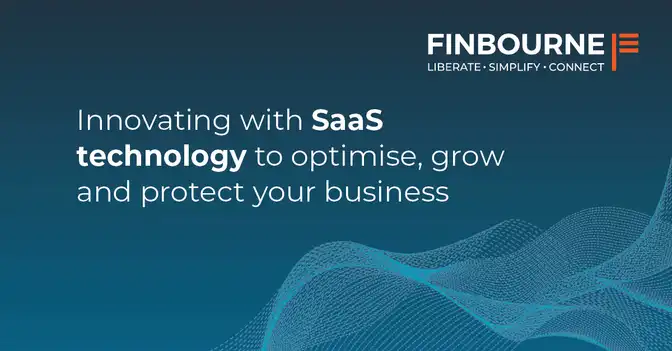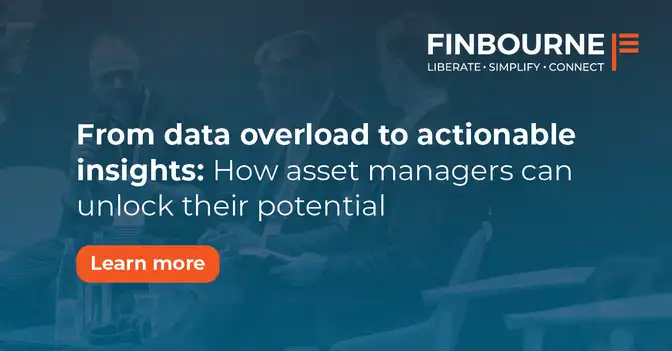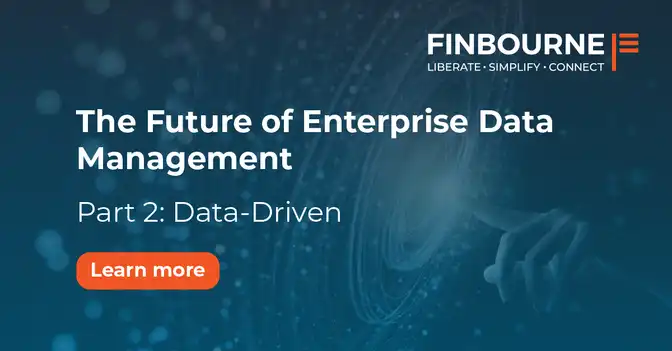Unprecedented pressure, stemming from both regulatory and cost considerations and expectation to deliver progressively higher returns each year, means the squeeze from investors and regulators alike has asset management firms in a vice.
It’s become clear in recent years that the ability to maximise the potential of data when managing portfolios is one of the key factors that separates successful asset managers from those that fall by the wayside.
Data, data and yet more data
Firms have an ever-increasing myriad of datapoints available to them, from which to optimise analysis, portfolio management and, ultimately, fund performance. This year-on-year increase in the sheer amount of data places increased strain on the legacy and patchwork systems firms use for managing and executing their investment strategy.
Bringing all this data into a single, streamlined system in a cost-effective way, is one of the biggest challenges firms face, particularly as they attempt to transition away from these legacy systems and look to benefit from new, innovative technologies.
At FINBOURNE we find the ‘buy versus build’ construct limits technology transformation, and firms are now adopting Software as a Service (SaaS) technology to solve the dilemma and rise to the data challenge.
SaaS solutions offer a range of benefits to businesses looking to improve scalability and innovation, offering greater flexibility, enhanced control, and faster time-to-market than traditional software.
Replacing existing portfolio management solutions with SaaS technology
Companies may implement SaaS technology for end-to-end portfolio management as a means of reducing the costs, dispelling with the management of multiple systems and reliance on legacy vendors and technologies. But far from just being a cost-cutting measure, there are also several benefits to performance.
SaaS tools can allow managers to scrutinise their portfolios more holistically. Built off a highly advanced data stack, users can look at their portfolio and exposure through an investment lens to retrieve the data needed to deliver reports, redefine and rebalance investment models, stress test portfolios against market events, and model almost any scenario imaginable. This also includes the ability to calculate and view vital performance characteristics in real-time, using live market data. This gives portfolio managers access to all the information they need to seamlessly book trades and create better performing funds, to grow the business.
Augmenting existing portfolio management solutions with SaaS technology
The scalability and flexibility of SaaS technology offers a strong alternative to firms who don’t want to be limited to ‘buy versus build’, especially for those who are looking to complement their existing functionality without a disruptive systems overhaul.
SaaS technology unlocks data interoperability, enabling the seamless flow of data across both internal and external data sources. As many firms go through major transformation programs such as mergers and acquisitions, this is crucial to optimising and protecting the business.
Firms can benefit from a solution that cleans, masters, stores, and distributes financial and non-financial data to the people and systems that need it in a controlled manner, removing the manual intervention needed to understand and use data across an organisation. This enables portfolio managers to leverage quality-assured data for value-adding tasks, such as what-if analysis and portfolio scenario building. It also allows users to focus on modelling performance and risk factors to address internal mandates and fulfill multi-jurisdictional regulatory obligations, all whilst offering a high-touch service to clients.
Data interoperability provided by SaaS technology gives users access to a suite of external partnerships and integrations to support connectivity to the financial market ecosystem. By connecting data outputs with existing technology via API or via data virtualization, new data sources can be onboarded in minutes rather than weeks or months.
By leveraging data virtualization, data can be ingested from any source, collating it into a single place, and transforming it into an easy-to-use format. This accelerates and enhances the integration of diverse data sets (such as ESG and private markets) in investment decision-making, powering highly configurable workflows for smart operations, and reducing reliance on expensive and inconsistent human effort. Data virtualization also plays an important role in Machine Learning Operations (MLOps) now dominating the financial services landscape. When fused together, data virtualization allows user to also quickly identify patterns, trends and correlations for deeper, data-driven insights. This enables portfolio managers to uncover insights that fuel robust investment decisions, to grow the business.
These are just a handful of examples of how SaaS can help companies unlock their data potential to solve business problems and create opportunities. To learn more about FINBOURNE’s Portfolio Management capabilities, click here.




